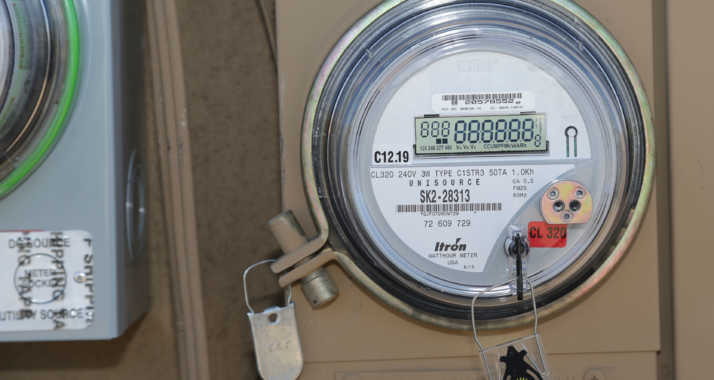FOR IMMEDIATE RELEASE
Apr 8 2014 12:00:00:000AM
News Media Contact: Joseph Barrios, (520) 884-3725, jbarrios@tep.com
Financial Analyst Contact: Chris Norman, (520) 884-3649
Diversified TEP Resource Plan Calls for More Renewable Energy, Less Coal
Tucson, Ariz. — Tucson Electric Power (TEP) plans to meet customers’ energy needs over the next 15 years by reducing its coal generation capacity by about one-third; acquiring new cost-effective natural gas-fired resources; and continuing its expansion of renewable power and energy-efficiency programs.
TEP’s plans are outlined in the 2014 Integrated Resource Plan (IRP) the company filed with the Arizona Corporation Commission (ACC) on April 1. The IRP describes how TEP plans to meet energy demand requirements through 2028, providing safe, reliable and reasonably priced service to customers while satisfying regulatory requirements and improving the environment.
“Being prepared to meet tomorrow’s energy needs requires planning today,” said David G. Hutchens, President and Chief Operating Officer of TEP and its parent company, UNS Energy (NYSE: UNS). “Resource planning is an ongoing balancing process that involves minimizing costs to our customers, enhancing our sustainability and satisfying regulatory requirements, all while effectively using our current infrastructure and preparing for future system improvements to continue serving our customers with high reliability.”
According to current projections, the company expects to add more than 50,000 customers over the next 10 years. Peak demand is projected to grow annually by about 1 to 1.5 percent.
The IRP highlights TEP’s plan to serve these growing energy demands through a long-term portfolio diversification strategy that will reduce the company’s reliance on coal-fired generation. The company plans to reduce its overall coal capacity by 492 megawatts (MW), or about 32 percent, over the next five years.
TEP plans to reduce its use of Unit 1 at the coal-fired Springerville Generating Station by 50 percent, or 197 MW, by purchasing only half of the unit after its current lease expires in 2015. Over the past year, the company also worked with the Environmental Protection Agency (EPA) to craft an alternative, cost-effective proposal that allows for the elimination of coal as a fuel source for Unit 4 at the H. Wilson Sundt Generating Station in Tucson instead of investing in more costly emission controls. TEP also supports a plan under consideration by EPA to retire two units at the coal-fired San Juan Generating Station in New Mexico. TEP currently receives 170 MW from one of the units that would be closed.
To replace some of the lost capacity from these existing coal-fired resources, TEP and sister company UniSource Energy Services are planning a joint purchase of a 550-MW combined-cycle unit at the natural gas-fired Gila River Power Station in Gila Bend, Arizona. TEP would control 413 MW of the unit’s output. TEP expects the Gila River purchase to be completed in December 2014. The purchase of this favorably priced resource will allow both companies to take advantage of currently low natural gas prices. TEP will continue to evaluate other resource alternatives such as long-term purchased power agreements and low-cost plant acquisitions.
TEP plans to further diversify its portfolio through continued investments in renewable energy and energy efficiency programs. By 2028, TEP anticipates that its combined solar, wind, and biogas resource capacity will increase from 157 MW today to 788 MW — enough energy to power approximately 136,000 homes. TEP also plans to reduce its need for new generating resources through a range of cost-effective, industry-proven energy-efficiency programs that will result in a cumulative capacity reduction of 312 MW, which is equivalent to the annual electric energy use of approximately 167,000 homes.
By 2028, TEP projects that its resource portfolio will consist of 43 percent coal-fired generation and 36 percent natural gas-fired resources. The remaining 21 percent will be made up of renewable energy and energy efficiency resources.
TEP hosted a workshop at its headquarters to share information and seek stakeholder input on resource planning alternatives. About 75 people attended the workshop and provided feedback to TEP’s resource planning team. The ACC will evaluate the TEP IRP in the months to come. For more information about TEP’s 2014 Integrated Resource Plan, visit tep.com/projects/planning/.
TEP provides safe, reliable electric service to approximately 413,000 customers in Southern Arizona. To learn more, visit tep.com. For more information about TEP’s parent company, UNS Energy, visit uns.com.






